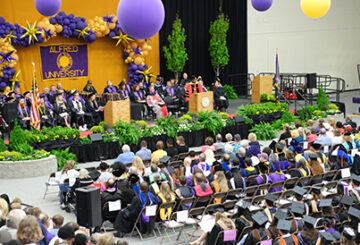Teachers union addresses wireless technology in schools
by Frederick Sinclair
Previous articles have brought to light the need to implement health and safety guidelines that have been established for the use of wired and wireless technology in classrooms. Champion of this cause since 2017, the New York State United Teachers Union (NYSUT) passed Resolution 22 entitled ‘Hazards of Wireless Radiation’. NYSUT represents more than 600,000 teachers, school related professionals, faculty in higher education, and union retirees. NYSUT Resolution 22 recognized that:
”abundant research links health and behavioral effects from exposure to wireless radiation, which can cause biological effects, including damage to cells and DNA, even at low levels.”
NYSUT responded to the World Health Organization classification of exposure to wireless radiation as possibly being carcinogenic to humans as well as numerous animal studies which predict neurological effects with long-term health consequences.
The research link is https://www.thechildsafeschool.org/resources select ‘Wireless in Schools’.
The NYSUT resolution resolved that:
- educational materials would be developed and distributed for members on the hazards of wireless radiation and best practices for safe alternatives to wireless connections, e.g. wired connections;
- members should be educated on the practice of shutting off/unplugging routers and setting wireless devices e.g., tablets and mobile phones, to safer modes;
- in order to reduce exposure to wireless radiation emissions to its members, locals are encouraged to negotiate contract language requiring districts/employers to : (1) put wireless routers only where human exposure is reduced, (2) disclose the placement of active wireless routers to their employees and (3) allow employees access/permission to shut routers off when not in use.
NYSUT, in cooperation with Grassroots Environmental Education, Inc., a science- based non-profit organization, have also published Guidelines for Use of Wired and Wireless technology in classrooms. In summary, the safest solution is to provide wired connections which are faster, more secure, more economical and safer than wireless networks. In situations where wired is not yet possible the guidelines advise decision makers to evoke the ‘Precautionary Principle, which advises that when an activity raises potential threats of harm to human health, precautionary measures should be taken. The guidelines recommend to:
- decrease exposure to WiFi emissions by altering locations and proximity to students and teachers in the classroom. (over the doorway is one option)
- avoid prolonged, close contact with wireless routers, laptop computers, tablets, cell and cordless phones.
- avoid concentrating of wireless microwave emitting devices in clusters.
- utilize airplane mode and when not on the internet deactivate WiFi and or shut down devices.
- position routers to maximize distance from inhabitants and provide on off switching for shutting down when not using the internet.
- reduce the broadcasting power output of the WiFi router. Successful operation of devices can be attained at a 25 % power setting which is a significant reduction from the maximum out of the box levels set at the factory.
The full Guidelines can be found at www.grassrootsinfo.org . A new arrival, The Baby Safe Project, has also produced an excellent brochure with important information and solutions for expectant mothers and infants who need informed protection. See https://www.babysafeproject.org for a free download or hardcopy. If you have an immediate need for hardcopy of the brochure email fpsinclair@yahoo.com and I will mail you a copy.






